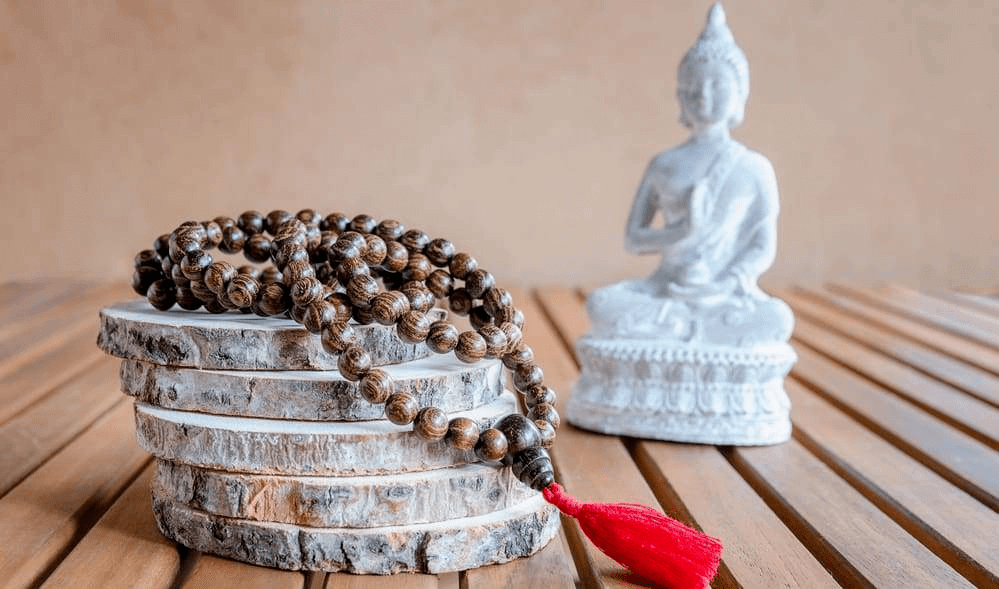Meditation
Mala Bracelet and Necklace Guide
Mala bracelets and necklaces are thriving in shops and on the internet. Having become a fashionable object, we now see them around the necks and wrists of many people.
But, are all of these bead necklaces really Malas?
How can you recognise a real Mala necklace?
Which beads must be used on a Mala bracelet?
A number of questions pop-up, and it is not always easy to find suitable answers… Until now!
In this article, we will try to explain all there is to know about these Buddhist inspired bracelets and necklaces, which have become meditation, well-being and fashion items during the 21st century.
What is a Mala ?

Originally, a Mala is a type of rosary, that is to say a series of beads strung on a closed cord, used to recite a series of prayers.
The Mala constitutes 108 identical moveable beads and a fixed bead at the knot. The latter known as a stupa, sumeru, bindu, guru bead, mother bead, or head marble, is different, both in colour as well as size and chosen material. Its role is to mark the beginning as well as the end, allowing us to count to 108.
The Mala necklace

Normally consisting of 109 beads (108 + 1 guru bead), but some models have added 3 counting beads. These are different from other beads, and are always placed after the 27th, 54th and 81st beads. A cycle of 108 can be separated into four lots of 27, which greatly reduces the risk of error, hence the name counting bead.
Mala necklaces in this category therefore have a total of 112 beads:
- 108 normal beads
- 1 guru bead.
- 3 counting beads.
Mala bracelet
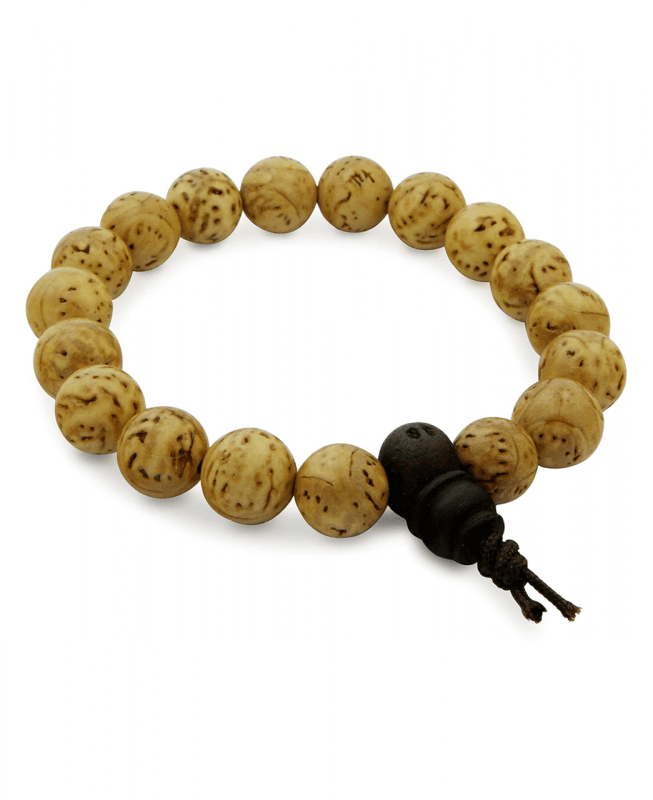
Originally, the Mala bracelet is actually a 108 bead necklace, wrapped around the wrist several times. However, it was quite long and thus not very practical… Over time, shorter Malas appeared- from 54, then 27 beads- thought to have been worn on the arm.
The number of beads were once again reduced, and today we often see Mala bracelets with only 9 or 18 beads, the important thing being that it is a multiple of 9.
The history of Japamala
There is no clear reference to the Mala’s creation, but ancient texts confirm that it originated in India and spread to China through Buddhism.
The origins of Mala
The first clear references to Mala as a prayer accompaniment date to the 4th century. It is mentioned in a sacred text in which Buddha reveals how to make and use one- but also on a sculpture dating to the same period, where the Mala necklace is held in their hand and not around the neck.
Nevertheless there are a number of older references to these bead necklaces, which leads us to think that the Mala is more than 3000 years old, but these are sometimes criticised by some historians.
Whatever it may be, there is no doubt that the term “Mala” comes from the Sanskrit word meaning “meditation garland”, and it was used for meditative prayer called “Japa”. It’s from here that the name “Japamala” comes from, very often used to describe these necklaces.
The Mala’s evolution
Initially used by Hindu and Buddhist monks during prayer, the Mala necklace has quickly become a meditation tool, the repetition of a Mantra is ideal to clear the mind and enter into a state of intense consciousness.
Contrary to what we may think, the Mala as a fashionable item is not a recent phenomenon. From the 13th century, necklaces became a means to display social status, and it was common that Malas came in rich and varied materials.
It was effectively around this period that rare wooden Malas appeared, as well as those made with precious stones, whereas previously they were often made with seeds or bone.
It is likely that the use of the Mala as an energy bearing object used to ward off evil spirits and cure various ailments, appeared in China around the 17th century.
The significance of the Mala necklace
The 108 Mala beads are not down to pure chance. This number actually holds strong symbolism in Buddhism as much as in Hinduism:
- The 108 afflictions (kleshas) in Buddhism.
- The 108 feelings (36 linked to the past, 36 to the present, and 36 the future) in Buddhist beliefs.
- The 108 tests that Buddha faced.
- The 108 sins and 108 virtues, again according to Buddhism.
- The 108 sacred texts (Upanishads) of Hinduism.
- The 108 names of certain Hindu divinities.
- The 108 energy lines forming the Heart chakra.
- The 108 Yoga positions
- The 108 Tai Chi movements
The list could go on if we considered the numbers 1, 0 and 8 separately (highly symbolic in Hinduism), or numbers 9, 27 and 54.
In addition, the guru bead, the 109th bead, also has deep significance. It represents the master who passes on their knowledge to a disciple, who in turn returns to their master once their initiatory journey is complete.
In the same way, the Tassel, or pompon, is situated after the head marble, where the string meets and ends, and is a representation of the union between the one who holds the Mala and the divine world.
Lastly, each bead is tied separately on the Mala, which strengthens the necklace, and also perfectly spaces out the marbles, in such a way that they can be used efficiently during Japa. This is one of the many differences between a Mala and a simple “bead necklace.”
Mala uses
There are so many ways to use a Mala since there are people who own a necklace or a bracelet…
There is no “right” or “wrong” way to wear a Mala bracelet or necklace. Everyone is free to enjoy them as they see fit, according to their needs, beliefs, and objectives.
The following examples are not recipes to be followed to the letter, but some examples from which you can draw inspiration.
Mala and religion
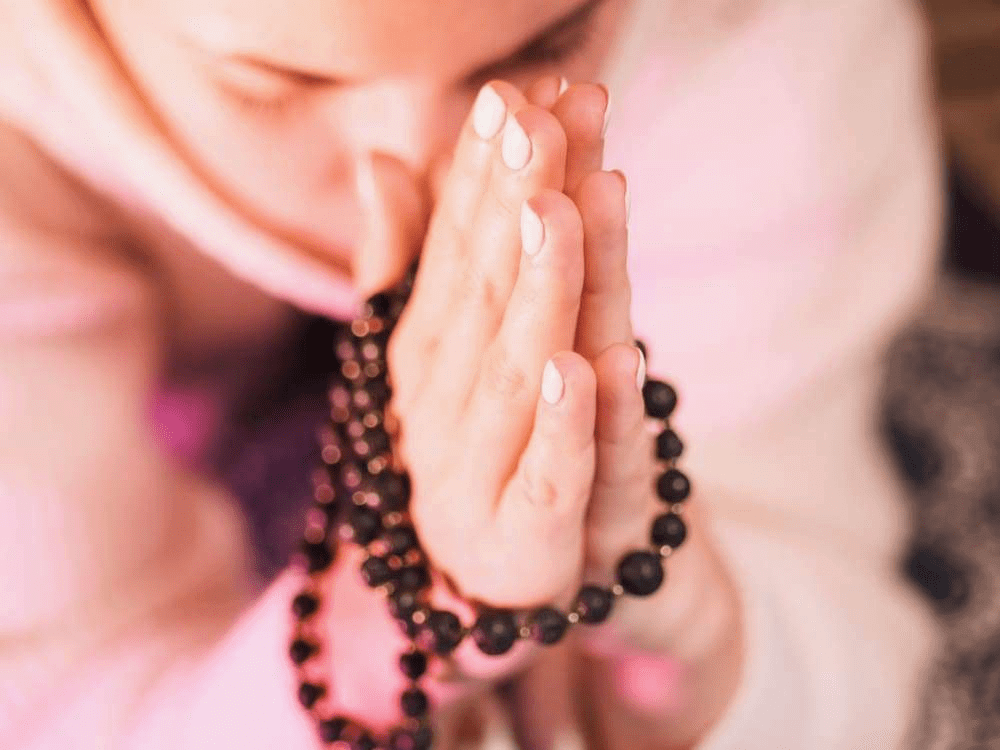
Mantras must be repeated several hundred times, and it is easy to lose count quickly. The 108 beads serve as a counter: just start from the guru bead and move one bead between your fingers at each repetition. When we get to the head bead, we can be sure that the mantra has been repeated 100 times!
The obvious question is this: why 108 beads, if the mantra has to be repeated “only” 100 times?
The answer is simple. The 8 additional beads are a precautionary measure, to account for an eventual handling error, or an incorrectly recited prayer. When we finish a Mala, we can be sure that at least the 100 necessary mantras have been recited, maybe a little more, but never less.
Mala and meditation
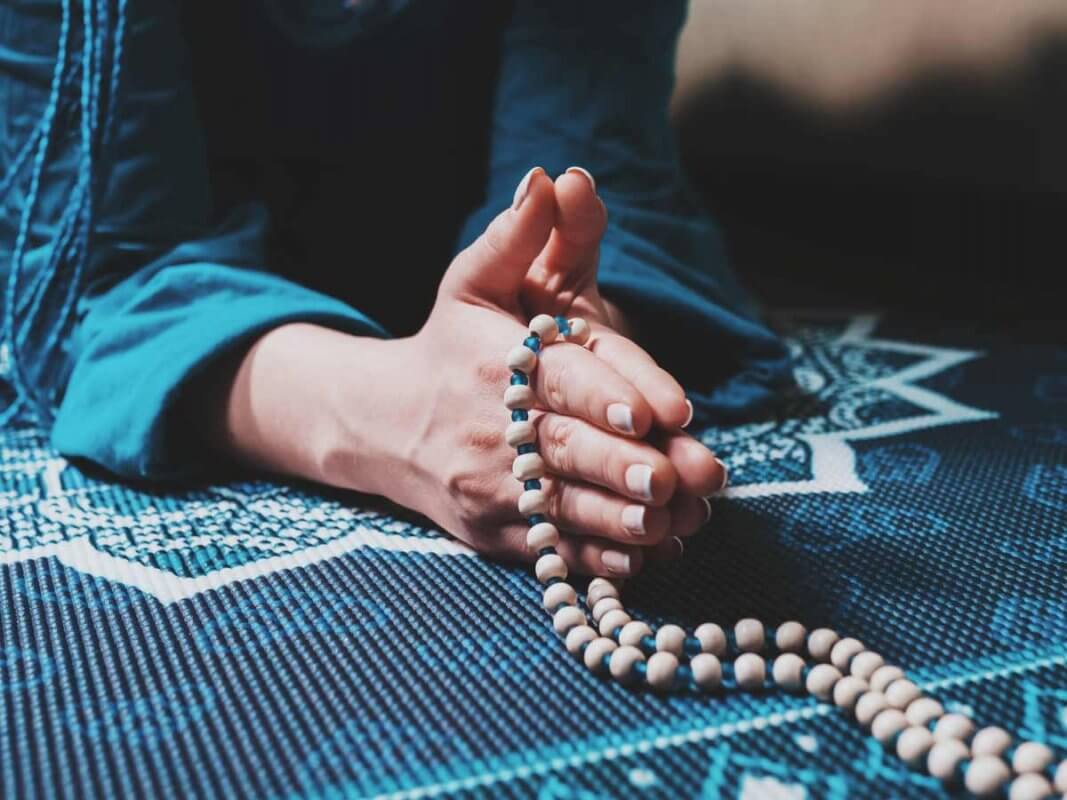
The repetitive aspect of reciting mantras with the help of a mala is ideal for entering into a meditative state. Today, again, the number of monks who use them to help them clear their minds, and focus all of their attention on the beads passing through their fingers.
Some Yoga or Tai Chi enthusiasts also use it as a fixed point, on which the gaze comes back to in order to reorient and refocus.
Mala and lithotherapy
If the Mala bracelet is a great classic of stone therapy today, the link is often less direct than it appears. In actual fact, it is above all the power of the stones that intervenes, and the Mala is then only a support for beads of different materials.
The Mala necklace can obviously be perfectly combined with lithotherapy, but it’s also a use in which we find many “bead necklaces” that are not real Malas: number of incorrect beads, different beads between them, balls not knotted separately…
Mala and fashion
If fashion followed rules, we would know! Here, there are no customs or costumes, the important thing being to feel good and wear your necklace or bracelet with pride.
However, a little bit like the previous point, this is an industry where we can find a number of fakes, with different beads or in incorrect quantities, badly knotted, without a Tassel…
On the other hand, it is also here that we find the most interesting innovations. One of them being the multiplication of counting beads. These are well situated after 27, 54 and 81 standard marbles, but they can be a different shape and design. It can happen quite often that there are 3 or 5 instead of one, marking a greater separation, and more aesthetic, without losing sight of the objective which is to separate the beads into groups of 27.
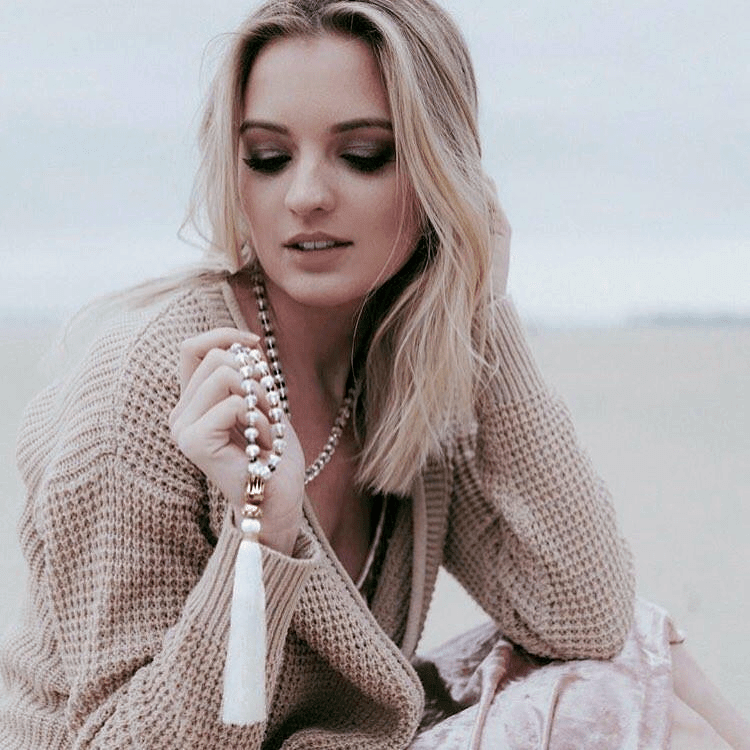
Choosing your Mala necklace
To choose your Mala necklace, there are 3 points you should pay attention to. For the rest, it is a question of personal taste, both in terms of materials and aesthetics.
The number of beads
A Mala necklace must have 108 identical beads, and a different colour and size of guru bead. You can also have 3 counting beads, located after the 27th, 54th, and 81st normal beads. These counting beads can be multiple, notably when it comes to fashion, but must constitute one set.
Mala bracelets are often shorter, but must also respect certain rules when it comes to the number of standard beads. This can be from 54, 27, 18, or 9. Also, the bracelet can have a guru bead, but this isn’t obligatory. On the other hand, it is rare to find counting beads.
The style of beads
If there are no rules about materials, colours, size or shape, it is important that at least all the standard beads are identical. This is often something that is sacrificed in favour of aesthetics, but the concept of the Mala necklace is to have 108 identical beads, which can be passed over with the fingers repeatedly and without distraction.
If each bead is different to touch, either by size or material, it can lose our interest.
Bead string
We can’t say it enough, but on a real Mantra, each bead is tied separately on the cord. They stay spaced out and can be used much more easily during meditation sessions.
Another advantage is that, if your necklace breaks, you won’t lose all of the beads and they won’t fall loudly everywhere and scatter all over your living room floor…
Maintaining your Mala bracelet
This is a question that comes up a lot: how do I take care of my Mala necklace?
The answer is generally disappointing… there is no miracle recipe… Clearly, it is better to avoid exposing it to extreme temperatures (hot or cold), or submit it to violent or repetitive shocks , but apart from that, there is nothing in particular that has to be done.
A Mala is not immortal, and one day it will break. However, that is by no means bad news: belief says that a Mala will break once it has completed its work and its owner has passed a stage of life.
The only exception comes from Malas used and lithotherapy, whose stones sometimes need to be recharged in terms of energy. According to practices, they must then be left in the sun, in water, or any other suitable place.
The last word
The Mala necklace, and its little brother the Mala bracelet, are extraordinary items. Full of history and symbolism, they are also fashion accessories or tools for meditation and care.
The beauty of Mala is that it does not confine itself to any strict mould, which lets everyone enjoy it according to their desires. An Oriental spirituality enthusiast or a fashion victim, everyone has a good reason to wear a Mala necklace!
Now that you have learned to spot a fake, and that you understand that there is no point listening to those who pretend to know THE one and only way to use a Mala correctly, all you have to do is enjoy yourself.
Whether you buy one or make it yourself, the Mala necklace is above all meant to help you feel better.

